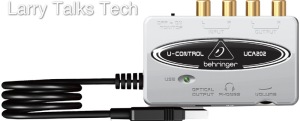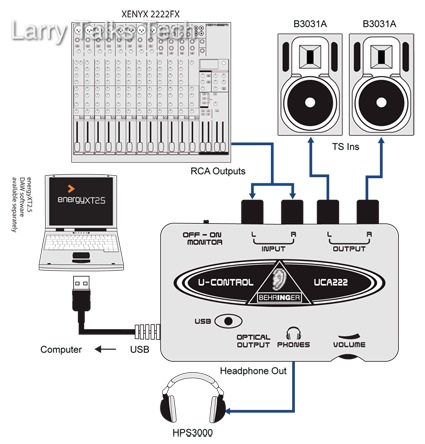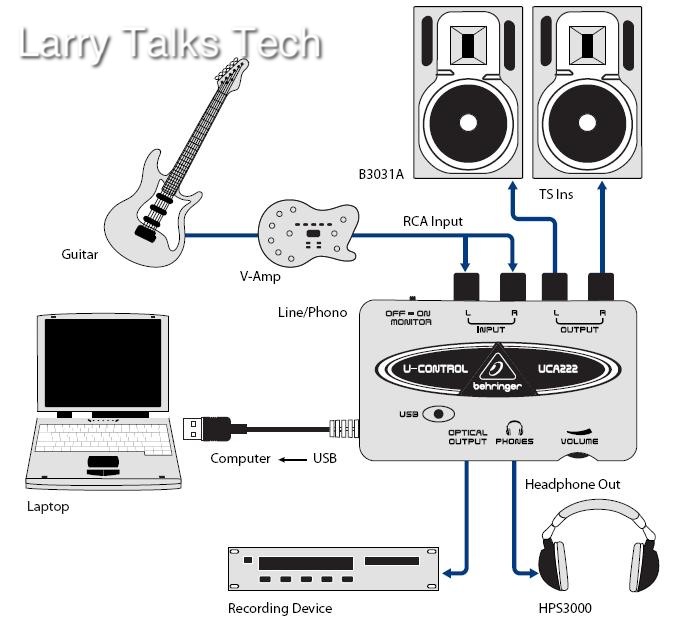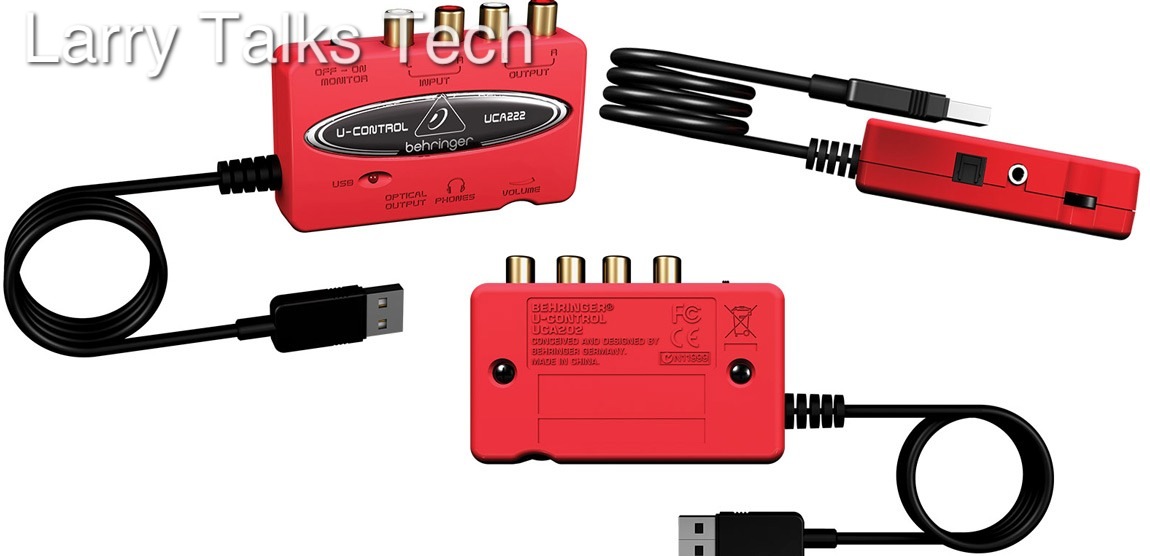My kingdom for a horse!
For several years, I used a Mac Pro “Cheese-grater”, with two Power PC G5 processors, as my home theater computer. The video was fine (as long as I ran it at 720P), and the audio was very good with fiber optic “out” . Its aging Mac OS X worked well with XBMC (version “Eden”), – my favorite media server software. All was bliss until XBMC released its “Frodo” version, and support for the Power PC was dropped. For a few months, I tried to decide whether to keep my current setup, or buy/build a new HTPC (home theater personal computer). Then my file server expired. The Mac Pro was decommissioned as a media server, and , like Pegasus, rose from the ashes as a file server, complete with a “BIG” hard drive, and a Debian Linux operating system. Now, what to do about the HTPC?

My choice for a HTPC would meet the following requirements: At least two gigs of ram, a dual core processor or dual processors running at 64 bits, DVI out (this video, along with an adapter, can attach via HDMI to my flat-screen TV), digital/fiber-optic “out” for audio, and all of this for “CHEAP”. To say I had a tight budget would be an understatement, so building the HTPC was out of the question. I needed a used computer. After some looking and head-scratching, I decided on a “brand” first. Hewlett-Packard became the obvious choice because I have had good look with them in the business world, and as HP sells a lot of computers, the odds of a “no hassle” (or “low hassle”) Linux install and configuration would be in my favor. Now for some Ebay searching. I found a 5-year-old HP DC5850 that met all my requirements, except for the audio (analog “out” only). It would ship without a hard drive for $60 (freight included). I bought it.
A week after my purchase, the HP was sitting in my living room. It came in very clean with surprisingly no visible signs of wear. Cool!!! Next, I pulled an unused Western Digital 500 gig hard drive from my “parts” closet (yes, only a true Geek will have a parts closet). With the hard drive installed, Debian soon followed. With the exception of a little work getting a driver for my Nvidia graphic adapter, the install and configuration of Debian was painless. Then came XBMC (“Frodo”), clam av, fail2ban, Samba, VLC, and so on….. Once all the software was in place, I fired the PC up, launched XBMC, and did a little configuration. The end result: my “new” HTPC has worked very well for nearly two years, but……..
I still wanted digital audio. I am not too concerned about Dolby 5.1, as Dolby Pro Logic II and Datasat Digital Sound (DTS) Neo: 6, as used in my Onkyo AV receiver, do a good job of converting two channel stereo into 5.1 surround sound. I wanted a simple, inexpensive digital solution.
To keep both the installation and use of the sound card simple, I decided on using a USB external sound card. I looked at variants of Sabrent, Diamond, Startech, and a good number of cheap Chinese solutions. They were, for the most part, very very very cheap, and as a result, I concluded that quality and reliability might be an issue. I liked the USB version of Creative Labs SB1090 X-Fi 5.1 Audio System. It looked pretty good, but at $60.00 it was at the top of my budget, and 5.1 was questionable, as drivers had to be installed if one were using Windows. Though 5.1 wasn’t a significant factor in my buying decision, if I am paying for it, I should be able to get it working. I read the Creative X-Fi would work on Linux; however, I was not sure that Dolby 5.1 would be available. In addition, my history with Creative Labs has shown their drivers can be a bit quirky to begin with, so installing the device with open source Alsa drivers and codecs found in Linux, might work better than those from Creative, or they might not. There were just too many unknowns for me to consider the Creative X-Fi. I nearly settled on the Turtle Beach Audio Advantage Micro II. A device with a diminutive sound card built into a USB Toslink. It uses a single 3.5 mm jack for analog audio out, or with an included adapter, it has digital out. The product is advertised to work on Window’s and Macs. Dolby Digital comes from an optional driver for Window’s only. As I read user reviews, it seemed the Micro II would work fine on Linux, sans the Dolby Digital option. As I read more, some reviewers were displeased with the Micro II’s sound, and had selected a device by Behringer. I then did some research on Behringer’s products. The item indeed looked impressive. I purchased a Behringer UCA202 for $30 (US), from Amazon.
A Rose By Any Other Name

Once you start doing some research on the Behringer UCA202, you will find that for both its price, flexibility, and audio stats, it is a very desirable product. It also must hold a record for the most names given to a device. It is called, the Behringer UCA 202, the Behringer U-Control UCA 202, the Behringer UCA202 USB Sound Card, the Behringer UCA 202 USB DAC, the Behringer UCA202 Audio Interface, and from Behringer’s Website: The Behringer U-Control UCA202 Ultra-Low Latency 2 in/2 out USB/Audio Interface with Digital Output. Yikes!!!

Now for more confusion, the Behringer UCA202 has a fraternal twin, the UCA222. As near as I can tell, the UCA202 was introduced in 2009. It has a silver case. In 2011, the UCA222 was introduced, and this item has a red case. The later, typically retails for $5.00 more than the former. With the exception of the case color, the items are the same. So, why the $5.00 variance? It seems that both items at one time had CD’s of software in their product box. The UCA222 had more software, and it was more specialized. OK, if you need more, and more specialized software, and prefer red over silver, then the UCA222 might for you; however, another twist, neither item ships with the CD’s anymore. The software is now all downloadable. You can freely download software for either product from the Behringer website. Here are the URL’s:
http://www.behringer.com/EN/Products/UCA202.aspx
http://www.behringer.com/EN/Products/UCA222.aspx
The bottom line: Today, the red UCA222 is a $5.00 upgrade over the silver (choose a name from above and insert it here)______________________________________. But wait, there’s more: there is also a UFO202, that at first, looks identical to the UCA202 (Silver, also). This item differs from the UCA202 in that it adds a small phono pre-amp, and does not have a TosLink S/PDIF optical out.
Enough nitpicking, here are some features of the UCA 202/222:
2 X RCA input
2 X RCA output
1 X TosLink S/PDIF optical output
3.5 mm headphone output
Volume control for the headphone output
Monitor switch allowing you to directly listen to what is coming in on the stereo inputs
Full duplex record/playback
Low latency driver
Here is without a doubt the most exhaustive review I found on this product, complete with performance spec’s:
http://nwavguy.blogspot.com/2011/02/behringer-uca202-review.html
There are many ways to use this device. For me, the UCA202’s USB cable carries digital audio to the UCA202, and exits via a fiber optic cable to my Onkyo receiver. Here are some more specialized uses for the UCA202 and UCA222:


Double, double toil and trouble
Installing the UCA202 or UCA222 is as simple as plugging the device into an available USB port, and turning on your computer. Done. No drivers needed, kernels to patch, etc.
The configuration of the UCA202 or UCA222 will depend on how you are going to use it. Here is how is I configured the device in Debian Linux, using UCA202’s S/PDIF out, with a fiber optic cable to my Onkyo AV receiver:
1. Find Sound Preferences. In Debian, the easiest way to do this is to find the Speaker icon on the tool bar, and right click on it. You will see in the drop-down box “Sound Preferences”. Click it. A window with multiple tabs appears on your screen. The window is entitled “Sound”.
2. Click the “Hardware” tab. Under the “Choose a device to configure:”, choose PCM2902 Audio Codec 1 output/1 input Digital Stereo Duplex (IEC958). Now at the bottom under “Settings for the selected device:”, click on the drop down arrow on the right in the “Profile:” box, and find and Digital Stereo Duplex.
3. Now, click on the “Input” tab. Under “Choose a device for sound input”, highlight PCM2902 Audio Codec Digital Stereo (IEC958), now just above, verify the box to the right of “Connector” displays: IEC958 – Stereo – Input
4. Click on the “Output” tab. Under “Choose a device for sound output:”, be sure to highlight: PCM2902 Audio Codec Digital Stereo (IEC958). At the bottom of the tab, to the right of “Connector”, verify the box displays: “Digital Output (S/PDIF)”. Occasionally, during setup, I have had the Connecter box display “Analog Stereo”. If it does, just go back through the “Input” and “Output” tabs, and verify that “PCM2902 Audio Codec Digital Stereo (IEC958)” is still highlighted.
5. That’s it. You can test your setup on the “Hardware” tab, by clicking (what else?): “Test Speakers”, in the lower right hand corner of the tab.
For those of you using XBMC, here is my audio setup. Before I go further, XBMC is cable of running different “skins”. These can vary Settings, the appearance of the GUI, and other variables. That being said, I am using on my Debian Linux install, XBMC version Frodo. The skin (which is by the way, beyond COOL!!!) I am using is Aeon MQ5. Here are my settings:
1. Go to “Settings”. Find and click on “System – Cache & Hardware”.
2. Find and click “Audio Output”. Depending on your installation, there could be 4 or more items showing here. For both clarity and brevity, I am only going to mention the items I changed:
Audio Output: Optical/Coax
Speaker Configuration: 7.1
Boost Volume Level on Downmix: Off
Output Stereo to All Speakers: On
Audio Output Device: Playback/recording through Pulseaudio Sound Server
Pass-through Device: HDA ATISB, AD198X Digital S/PDIF
What light through yonder window breaks?
I have used the device now for sometime. As a test, I reconnected and configured it as an analog stereo device for sound output. Though the analog output sounds fine, the digital output is indeed much clearer. I have kept it as a digital device. The UCA202 works flawlessly. For a $30 investment its hard to beat.
There are some downsides:
No Dolby Digital. It must rely on a receiver to do two channel stereo into DTS Nero: 6, or Dolby Pro Logic II to get surround sound.
The device has been around since 2009, and some of its components are showing their age: such as, the USB is version 1.1

Hi, I own the same UCA 202, and it supports SPDIF with Dolby Digital 5.1 and DTS 5.1, in mplayer I use this command
$ mplayer -ao alsa:device=hw=CODEC.0 -ac hwdts -af channels=2:2:0:1:1:0 video_file_with_dts
change hwdts with hwac3 if your file has dolby digital sountrack,
With ripped DTS-CDs (Multichannel 5.1 Audio CDs) in WAVs only the audio filter to swap channels is necessary
As mentioned in forums the problem with the UCA 202 is that this DAC swaps channels with multichannel audio.
Pablo,
I appreciate the good info. This explains the DAC issue.
Larry
Hello Pable,
I’m Carlos, I also have the UCA202 but I don’t know how to make it work with DD 5.1 adn DTS. could you write a step-by-step tutorial on how to enable the Dolby digityal and DTS over SPDIF?
Thanks
Carlos Gamez
The UCA202/04 does not have the native codecs on-board to run DD5.1 and DTS. My experience was that it would not provide any describable audio at all. Depending on your operating system, some codes are available that will at least allow you to play DD5.1, but it will still be converting two channels into 5, and not 5 distinct channels. There are number of variables that need to be resolved to play DD5.1, the main one being the computer’s operating system, as well as how and what the UCA202/04 is connecting to (TV, video receiver, etc.). The first thing to try is to find what, if any, codecs for Dolby are available for your computer’s operating system, and install them. If you are lucky, they will let you play Dolby “out of the box”, if not, you may have to research alternative methods to get the codecs to work for you. There are just too many alternate solutions for me to write an article on accomplishing this task.
Sorry I couldn’t be of more help.
Larry
The UCA202 doesn’t need on-board codecs, when using SPDIF passthrough it’s the receiver who decodes the stream. If you don’t have source media in DD or DTS you must transcode your multichannel audio (with ffmpeg for AC3/DD, or dcaenc for DTS). Even, is posible to create a virtual sink in alsa to do this in real time, with DD or DTS. Search for dcaenc alsa plug-in.
Here is a list of the additional codecs I use in the Kodibuntu OS on my HTPC: ibxine1-ffmpeg, mencoder, flac, faac, faad, sox, ffmpeg2theora, libmpeg2-4, uudeview, libmpeg3-1, mpeg3-utils, mpegdemux, liba52-dev, mpeg2dec, vorbis-tools, id3v2, mpg321, mpg123, libflac++6, totem-mozilla, icedax, lame, libmad0, libjpeg-progs, libdvdcss2, libdvdread4, libdvdnav4, libswscale-extra-2 and ubuntu-restricted-extras. DD plays well. My UCA202 connects to a Marantz receiver via optic cable. I have yet to try DTS and will try the dcaenc also plug-in. Thank you for the very good input.
Larry
Hi Carlos, you need source media in DD5.1 or DTS, with other sources you need real time dts or ac3 encoding. If you have e.g. a mkv file with an ac3 soundtrack and computer speakers with hardware ac3 decoding (e.g. Logitech Z-5500) you need to tell to mplayer (or mpv) to output audio according to the SPDIF specification with the -ac hwac3 option. Because the UCA202 normally isn’t the default alsa sound card, you need to specify it with the “-ao alsa:device=hw=CODEC.0” option. Because Behringer needs to pay royalties for use DD or DTS the SPDIF stream is modified, but you can restore it with the “-af channels=2:2:0:1:1:0” option. The SPDIF stream looks like a two channel PCM, but in reality is a multichannel one (it’s only the “container”) the “-af channels” filter swaps these two apparently pcm channels in the SPDIF stream. With mpv is very similar. AFAIK this doesn’t work with VLC because you need to filter the SPDIF stream after the output module. You can contact me in #fisired at freenode’s irc.
I just got a UCA222. Same price as UCA202 at Sweetwater Sound, $29.99.
Although the Manual states it as a USB 1.1 device, it identifies on the USB Bus as supporting USB 2.0.
Terry,
That’s a good deal. Hope you enjoy the UCA222.
Larry